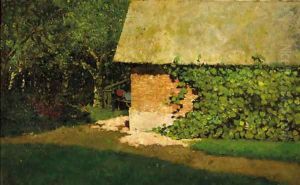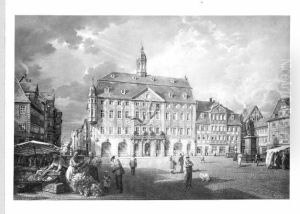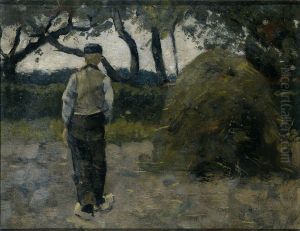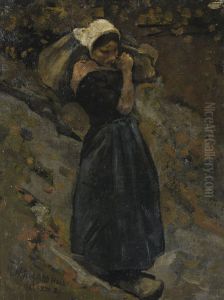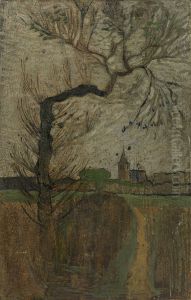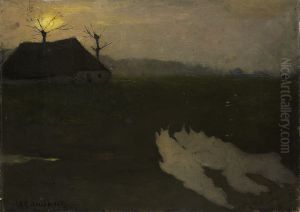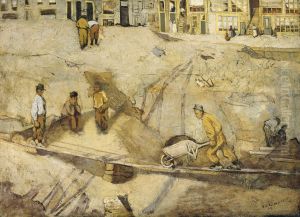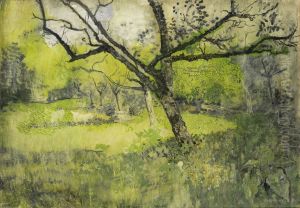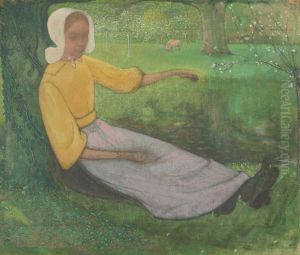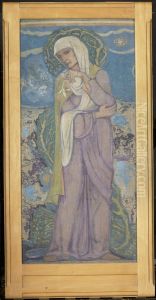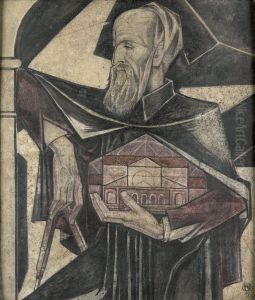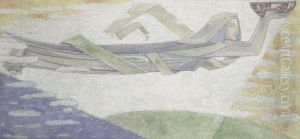Richard Roland Holst Paintings
Richard Nicolaüs Roland Holst, often known simply as Rik Roland Holst, was a notable Dutch artist, associated with the Symbolist movement and the Arts and Crafts movement. Born on December 4, 1868, in Amsterdam, he was not just a painter and graphic designer but also a highly regarded lithographer, muralist, and writer. He married the poet Henriette Roland Holst, who was an important figure in her own right, and the couple often collaborated on projects that combined their literary and artistic talents.
Roland Holst's artistic journey was deeply influenced by his education and travel. He studied at the Rijksakademie van beeldende kunsten in Amsterdam and later continued his education in Brussels, which was a hub for avant-garde art at the time. His style evolved under the influence of Symbolism, and he particularly admired the work of William Morris, whose philosophies in art and design left a lasting impact on him.
Throughout his career, Roland Holst was a passionate advocate for the integration of art and life, and he frequently incorporated social and political themes into his work. His murals and graphic designs often featured allegorical and mythological subjects, and he was known for his strong compositions, which were imbued with a sense of purpose and a commitment to social justice.
Besides his visual artwork, Roland Holst was also an accomplished writer on art theory and aesthetics, contributing to the intellectual discourse of his time. He was a professor at the Academy of Visual Arts in Amsterdam, where he taught monumental art, a testament to his belief in the importance of public art and its role in society.
Roland Holst's legacy includes numerous public artworks, publications, and a body of work that reflects his ideological commitment to an art that is both beautiful and socially conscious. He died on December 31, 1938, in Bloemendaal, leaving behind a rich and influential body of work that continues to be studied and admired for its contribution to Dutch art and culture.
